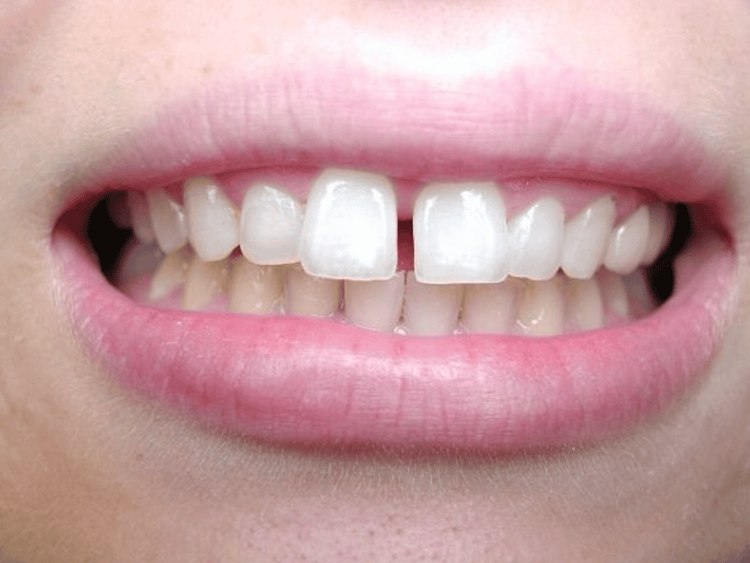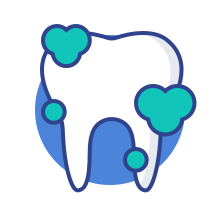Tooth Restorations
What is Tooth Restorations?
Dental prosthetics is a branch of Odonto-Stomatology that includes replacing lost teeth using dentures or other artificial teeth making methods. It is also involved in the reconstruction of other oral defects such as missing parts of the teeth and problems on the structures of the jaw and tooth bones.
In which cases is dental restoration applied?
Cases of tooth loss (loss of 1 or more teeth or loss of teeth in the whole jaw) Cases of damaged teeth such as broken teeth, chipped teeth .. Cases of teeth with dental disease that need restoration to protect teeth ensure chewing function and aesthetics such as tooth decay, pulpitis, enamel wear, enamel hypoplasia … Cases of teeth with cosmetic defects such as wide teeth, crooked teeth, overbite mild… but the patient has no conditions or does not want orthodontic treatment

How many types of dental restorations are there?
You may think it is difficult to recognize the different types of dental restorations, but it is easy to distinguish the types of dental restorations once you find out what features each type includes, advantages and disadvantages. What are the points or limitations when applying.
Currently, there are 2 main methods being used: fixed prostheses and removable prostheses
Fixed prosthetics: Implant implants, crowns (teeth), bridges, veneers, inlays, onlays Removable prostheses Installation: partial and complete removable denture with different materials such as frame jaw, flexible plastic jaw, hard plastic jaw Fixed prosthetic: Dental implant: Correcting right on the Implant means that the post is implanted into the jaw bone. like the root of a tooth and can replace one, a few or all of the teeth. Dental restoration with Implant is one of the most complete and optimal tooth replacement replacement techniques available today. At that time, the doctor will implant the implant post into the position of the lost tooth to replace the root, then the porcelain crown (crown) is placed on top to replace the lost crown. Implant technique will not cause damage to adjacent teeth because there is no need to grind adjacent teeth and is most suitable for oral physiological health, achieving high efficiency, improving chewing function, stronger than teeth. real, aesthetic and durable. Implant implants require specialized techniques, so the doctor must be a person who is well-trained in Implant technique and experienced in the field of prosthetics to be eligible to perform. The cost of an Implant is also higher than conventional dental restoration methods, but due to its outstanding advantages, more and more Implant is the choice of the majority of customers.

Dental crowns
Dental crowns (crowns) Usually applied to cases where teeth need restoration after treatment of tooth decay, pulpitis, enamel wear… or teeth with physical and cosmetic defects such as dark black teeth, yellow stains , dull, broken teeth, chipped, badly decayed or lost almost the entire outer part of the teeth, teeth worn, crooked, underbite, bad bite ..
Currently, with aesthetic needs Many customers choose the cosmetic porcelain crown method that will help improve and completely change the appearance of their teeth in color and shape.

Dental Bridges
Bridges For cases of missing teeth that for some reason cannot be implanted, the method of making porcelain bridges is a method of using porcelain crowns to replace the lost crowns. The doctor will use the healthy real teeth next to the missing tooth (2 or more depending on the bridge design) to make a denture abutment. Real teeth will be ground down to reduce the pulp, then will support the span of a porcelain bridge consisting of many porcelain crowns attached to each other to replace lost teeth.
Dental bridges help restore the natural look of teeth in a short time of just a few days and can last for many years with proper oral hygiene and care. Moreover, the price of porcelain dental bridges is suitable for the financial ability of most customers, so anyone can proceed to make porcelain bridges to restore healthy teeth.

Veneers
Veneers Porcelain veneers are thin outer layers that cover discolored or chipped teeth to improve the appearance of teeth. Currently, this is also the most popular method for cosmetic dentistry due to its advantages, minimizing invasiveness to natural tooth tissue.
For this method, depending on the case, doctors only need to grind a very thin layer with an average thickness of 0.1mm to 0.5mm on the outer surface of the tooth. Therefore, most of the enamel and sensitive tissues around the teeth are completely undamaged, the life of the teeth will not be affected much, causing no pain or discomfort to the patient. Porcelain veneers are placed on real teeth with a special glue and cement system, so they will be firm and intact, without fear of peeling, peeling or falling out during daily activities.
Removable prosthetics Dentures (hard plastic jaw, flexible plastic jaw, frame jaw…)
This is a prosthetic method applicable to cases of tooth loss, not applicable to cases of chipped teeth, broken… Dentures will be made for the patient to wear to eat and chew and can be removed for oral hygiene
Depending on the state of tooth loss, the doctor will suggest choosing a type of partial denture. or full denture. The advantage of this technique is that it is simple to perform, only needs to take impressions of the jaws to make dentures, very quickly and cost-effectively.

Fillings
Dental fillings are the most common procedure performed in our office. They repair and restore the tooth and help prevent painful decay or infection that would require more serious work. We use composite resin fillings that are colour matched to your tooth. Unlike amalgam (metal fillings), tooth-coloured composite resin bonds really well with the tooth and is capable of filling much smaller spaces which means less drilling!
Why Are Fillings So Important?
The prospect of getting a filling can feel like a chore for many. You may find yourself putting it off or wondering why you need to have a filling in the first place, especially if your tooth doesn’t hurt (yet). Nonetheless, we strongly recommend you have your cavities filled at your earliest convenience, and here is why:
- Stop cavities from getting bigger.
- Prevent painful infections or abscesses.
- Cavities weaken your tooth. Fillings restore strength and durability.
- They save you money in the long run.
- Reduce sensitivity to hot and cold.
- Preserve your natural smile for as long as possible.
How Is A Cavity Filled?

Filling the Tooth
You might be numbed for the filling to keep you comfortable. An adhesive gel is placed on the affected tooth over which a composite resin (white filling material) will be moulded and sculpted to match your contours or bite.

Curing the Composite
The composite resin material used to fill or bond your tooth is quickly cured and hardened with a special LED light. The doctor will carefully examine your finished tooth and make any required finishing touches before giving it a final polish.

Contact Us Today
to schedule an initial consultation & exam.
Your consultation will include an examination of everything from your teeth, gums and soft tissues to the shape and condition of your bite. Generally, we want to see how your whole mouth looks and functions. Before we plan your treatment we want to know everything about the health and aesthetic of your smile, and, most importantly, what you want to achieve so we can help you get there.



